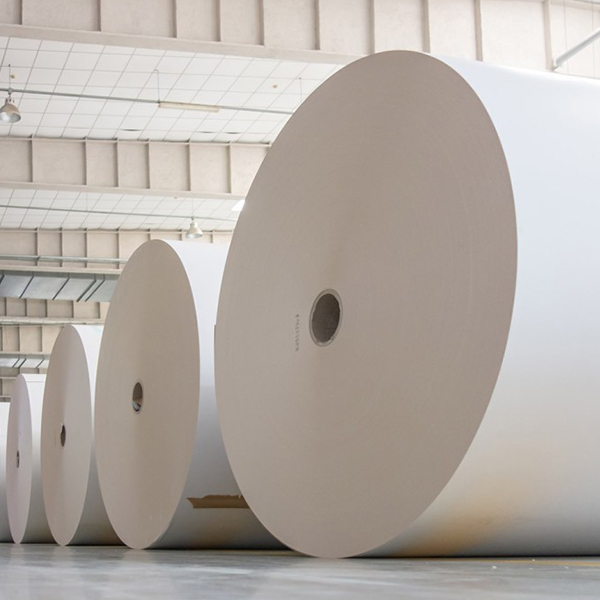The production process of Aqueous Coated Paper centers on applying a water-based coating to the surface of base paper, followed by drying and calendering to ultimately produce finished paper with specific appearance and performance. The entire process is mainly divided into six core stages: base paper preparation, coating formulation, coating application, drying, calendering, and slitting.

This is the foundation of production, and the quality of base paper directly affects the performance of the final product.
Base paper selection: Bleached wood pulp paper or mixed pulp paper is usually used, with a basis weight (weight per square meter) generally ranging from 60 to 300 g/㎡. It must meet requirements for flatness, strength, and absorbency.
Base paper processing: The base paper undergoes unwinding, splicing, and tension control to ensure stable operation during the coating stage, preventing wrinkles or breakage.
The coating is crucial for determining the coating performance and must be mixed precisely according to the formula.
Core components: Include pigments (such as calcium carbonate, kaolin), binders (such as styrene-acrylic emulsion, polyvinyl alcohol), additives (such as dispersants, defoamers, water repellents), and water.
Formulation process: First, mix pigments with water and dispersants, then grind to the specified fineness (usually 10-20 μm). Next, add binders and other additives, stir evenly, and filter to ensure the coating is free of impurities and meets fluidity standards.
This is the core step of the process, involving uniformly applying the prepared water-based coating to the surface of the base paper.
Common equipment: Coating methods are selected based on product requirements, with mainstream options including blade coaters (suitable for high coating weight and high precision), air knife coaters (suitable for thin coatings), and roll coaters (high efficiency, suitable for large-scale production).
Coating requirements: Control the coating weight (usually 3-15 g/㎡ dry weight) and uniformity to avoid defects such as missing coating or streaks.
Dry the coated wet paper web to remove moisture and cure the binder, forming a stable coating.
Drying methods: Mostly use hot air drying or infrared drying; some production lines combine both methods to improve efficiency.
Key control: The drying temperature should rise gradually (usually 50-120°C) to avoid paper deformation or coating cracking caused by sudden temperature increases. At the same time, control the drying speed to ensure the moisture content drops to the standard range of 5-8%.
Improve the smoothness and gloss of the paper surface through mechanical pressure, enhancing printability.
Calendering equipment: Super calenders or soft calenders are commonly used, consisting of multiple sets of metal rolls and elastic rolls.
Process parameters: Adjust the calendering pressure (usually 50-200 kN/m) and temperature (room temperature or heated to 60-80°C) according to the required gloss of the finished product to make the coating surface denser and flatter.
Process the continuous large paper rolls into specifications required by customers.
Slitting: Use a slitting machine to cut the dried and calendered large paper rolls (mother rolls) into flat sheets or small rolls of specified width and length.
Inspection & packaging: Inspect the finished products for indicators such as appearance, thickness, and gloss. Qualified products are packaged and stored in warehouses, waiting for delivery.
Previous: What Is Aqueous Coated Paper?